Xeriscape Landscaping Plants For The Arizona Desert Environment.
Pictures, Photos, Information, Descriptions,
Images, & Reviews.
Perennials.
Mexican Bush Sage, Salvia leucantha.
We Are Proud Of Our SafeSurf Rating!
Click On Any Of The Following Links By Amazon.Com
For Books, & Videos About Wildflowers Of Arizona & The Southwest USA. No Obligation!
 |
| Mexican Bush Sage, Salvia leucantha. |
|---|
 |
| Mexican Bush Sage, Salvia leucantha. |
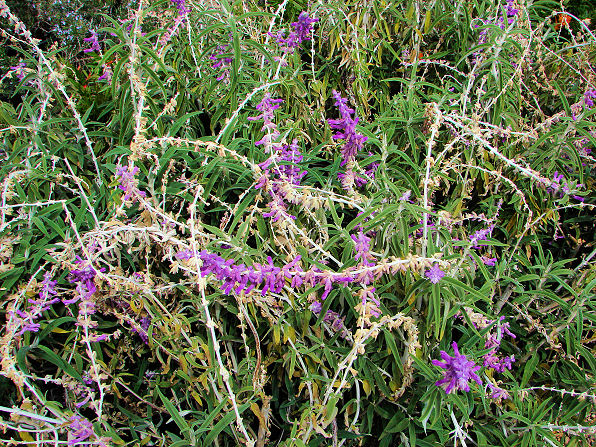 |
| Mexican Bush Sage, Salvia leucantha. |
|---|
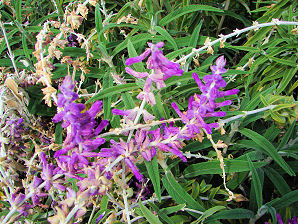 |  |
| Velvet Sage, Salvia clevelandii. | Mexican Bush Sage, Salvia leucantha. |
|---|---|
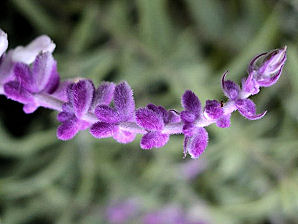 | 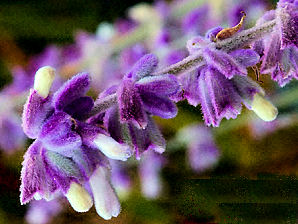 |
| Velvet Sage, Salvia clevelandii. White Flower Emerges. | Mexican Bush Sage, Salvia leucantha. White Flower Emerges. |
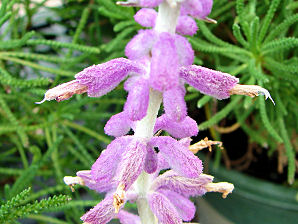 | |
| Velvet Sage Leaves. | Salvia leucantha Flowers. |
 /
/

Mexican Bush Sage. Salvia leucantha, Lamiaceae Family: ( Lamiaceae ) , Mexican Bush Sage. Also Called: Velvet Sage. We wish to thank Wikipedia, the free encyclopedia for some of the information on this page. We share images and information with Wikipedia. Mexican Bush Sage is a fast growing, perennial, medium size shrub. It can be used as a xeriscape plant in hot, dry areas. It is good for hummingbird and butterfly gardens Salvia leucantha (Mexican bush sage) is a herbaceous perennial that is native to subtropical and tropical conifer forests in central and eastern Mexico. The flowers are usually white, emerging from coloured bracts. It is not frost hardy, but is often grown in warmer latitudes for its prominent arching velvety blue or purple inflorescences. Mexican bush sage is especially well adapted to hot, desert-like areas. It has a long period of bloom. Salvia leucantha needs some shade in the summer afternoon. It will bloom from mid to late summer until frost when it will die back to the ground. In warmer climates, like Phoenix, it may stay evergreen. In this situation, cutting it back to the ground once a year in the fall is recommended. Mexican bush sage has graceful arching stems and soft downy foliage. The fuzzy purple calyces persist even after the actual flowers have fallen off, making Mexican bush sage an excellent plant for use as a cut flower.
Quick Notes:
Height: About 36 - 48 inches tall, spread to about 2 to 3 feet wide.
Flowers: White flowers 1/2 inch long that extends from velvet - purple or lavender - blue calyces. The bicolored inflorescences are borne in elongated arching clusters 6 - 12 inches in length at the ends of erect, spreading stems.
Blooming Time: Mid March - October.
Leaves: Leaves are lance shaped, 11/2 inches long, white-wooly underneath. They are on petioles about an inch long and arranged in opposite pairs along the stems.
Found: Native to Mexico & Central America.
Elevation: Naturally found between 0 and 3,000 feet.
Hardiness: We have read reports of it growing well in Winston Salem, NC (Zone 7a).
Soil pH requirements:
Sun Exposure:
Habitat: Desert soil, rock, does well in loose soil on slopes. Well-drained soil. Native to subtropical and tropical conifer forests in central and eastern Mexico.
Miscellaneous: Excellent Xeriscape Landscaping Plant. Flowering Photos Taken March 27, 2006. Peoria, Arizona Xeriscape Demonstration Garden.
|
We Are Proud Of Our SafeSurf Rating!



We Are Proud Of Our SafeSurf Rating!
Click On Any Of The Following Links By Amazon.Com
For Books, & Videos About Xerioscape Plants Of Arizona & The Southwest USA. No Obligation!
| © 1966 - Present, Audrey, Eve, & George DeLange |

